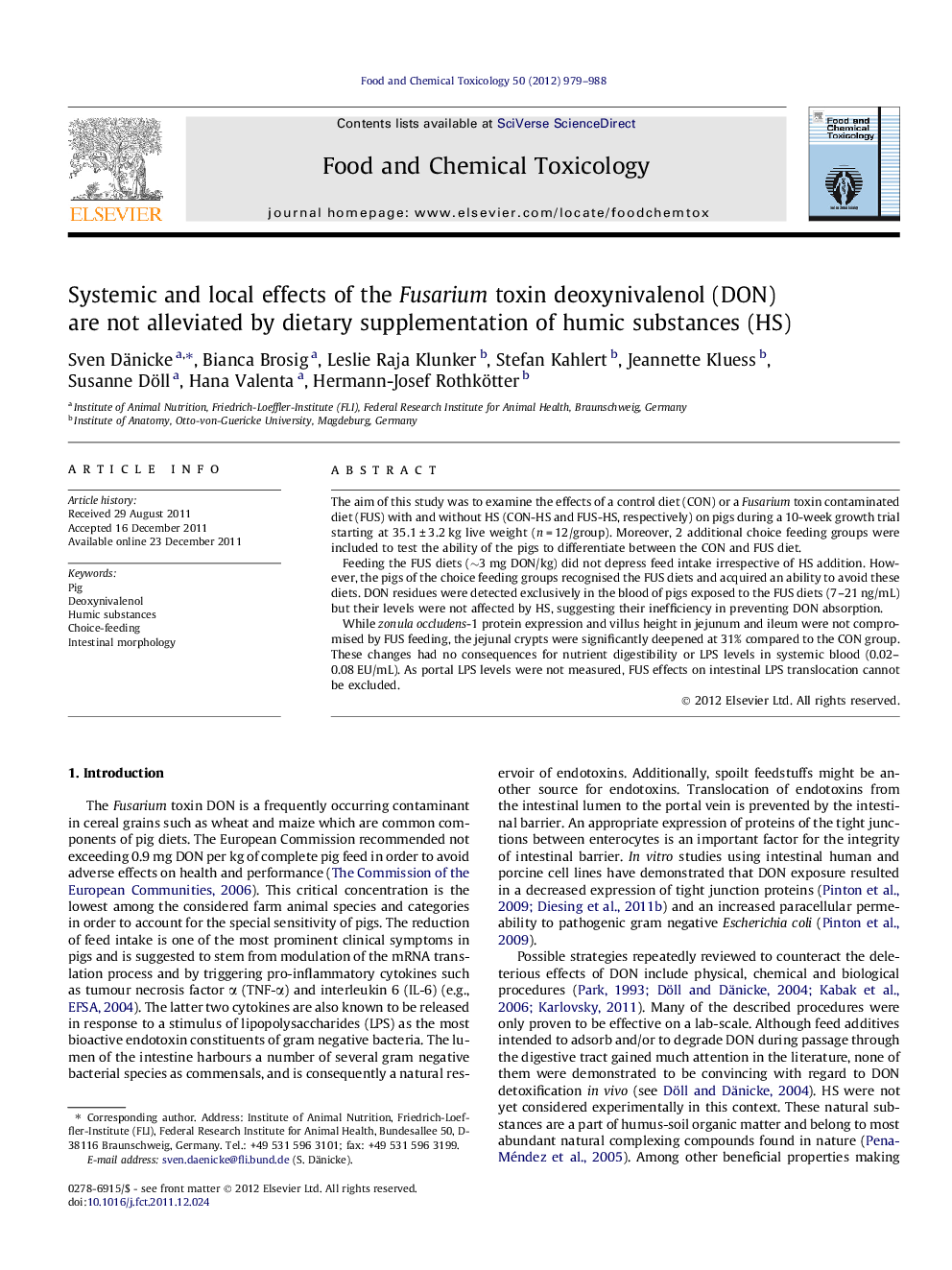| کد مقاله | کد نشریه | سال انتشار | مقاله انگلیسی | نسخه تمام متن |
|---|---|---|---|---|
| 5853653 | 1561795 | 2012 | 10 صفحه PDF | دانلود رایگان |

The aim of this study was to examine the effects of a control diet (CON) or a Fusarium toxin contaminated diet (FUS) with and without HS (CON-HS and FUS-HS, respectively) on pigs during a 10-week growth trial starting at 35.1 ± 3.2 kg live weight (n = 12/group). Moreover, 2 additional choice feeding groups were included to test the ability of the pigs to differentiate between the CON and FUS diet.Feeding the FUS diets (â¼3 mg DON/kg) did not depress feed intake irrespective of HS addition. However, the pigs of the choice feeding groups recognised the FUS diets and acquired an ability to avoid these diets. DON residues were detected exclusively in the blood of pigs exposed to the FUS diets (7-21 ng/mL) but their levels were not affected by HS, suggesting their inefficiency in preventing DON absorption.While zonula occludens-1 protein expression and villus height in jejunum and ileum were not compromised by FUS feeding, the jejunal crypts were significantly deepened at 31% compared to the CON group. These changes had no consequences for nutrient digestibility or LPS levels in systemic blood (0.02-0.08 EU/mL). As portal LPS levels were not measured, FUS effects on intestinal LPS translocation cannot be excluded.
⺠We examined the effects of deoxynivalenol (DON) and humic substances (HS) on pigs. ⺠DON caused deepened jejunal crypts whilst ZO-1 expression remained unaltered. ⺠HS did not prevent DON absorption. ⺠Systemic LPS absorption remained uninfluenced by DON or HS.
Journal: Food and Chemical Toxicology - Volume 50, Issues 3â4, MarchâApril 2012, Pages 979-988